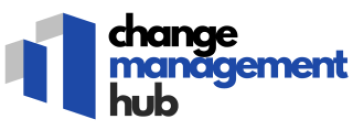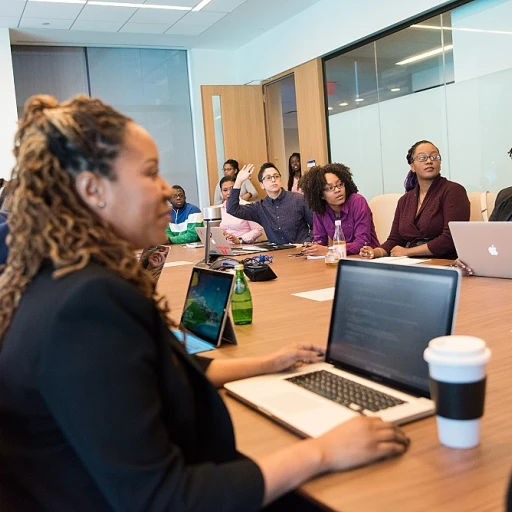
Defining Same Day Resolution and First Contact Resolution
Clarifying the Distinct Concepts
When discussing change management, two important concepts to understand are Same Day Resolution and First Contact Resolution. While both are integral to improving customer satisfaction and service efficiency, their focus and execution differ. Let's dive into the nuances of each resolution approach to grasp their unique roles within a business environment.
Same Day Resolution (SDR) refers to the ability of a customer service team to resolve issues or inquiries within the same day they are reported. This approach emphasizes a rapid turnaround, which can significantly enhance the customer's experience by swiftly addressing their needs. The goal is to maximize the number of customer interactions resolved by the end of the business day, thereby increasing the resolution rate of the contact center.
This resolution method often involves collaboration between different departments within a company to ensure that resources and information are readily accessible to support teams. The customer satisfaction benefit is clear: issues resolved promptly lead to happier customers, reducing call frequency to the service center.
First Contact Resolution (FCR), on the other hand, focuses on resolving the customer's issue during their first point of contact with the service team. The aim here is efficiency and reducing the total number of customer calls needed to handle a particular issue. By achieving a high FCR rate, a company can lower operational costs, enhance the use of resources, and provide a seamless customer experience.
For call centers, FCR is a critical metric that indicates the effectiveness of support agents. Higher FCR rates mean that more customer contacts are resolved without needing follow-up calls, reducing strain on resources and allowing the team to handle more inquiries. Measuring FCR accurately is essential for evaluating a call center's performance and implementing best practices for customer service.
The difference between these two approaches is subtle but significant. Each has its own advantages and applications that can be optimized for specific business models and customer service strategies. As we explore the roles these resolutions play within change management, we see how they can be integral in shaping a company's approach to effective service delivery.
The Role of Same Day Resolution in Change Management
The Impact of Timely Resolution
In the realm of change management, the use of same day resolution has grown more crucial, especially when considering the needs of modern customer service environments. Businesses increasingly rely on swift problem solving to ensure customer satisfaction and maintain competitive advantage. Understanding this approach requires a focus on both efficiency and effectiveness. Same day resolution prioritizes completing customer inquiries or issues within the same business day. This practice significantly enhances the overall customer experience by reducing waiting times and fostering a sense of immediate attention. Customers often perceive a higher level of dedication and support when their concerns are resolved promptly, which can boost customer satisfaction and loyalty. One of the key elements in achieving same day resolution is the support team's ability to coordinate effectively to handle customer contacts promptly. There is a vital difference between a quick fix and a comprehensive resolution to problems. Same day resolution isn't just about speed; it also involves ensuring that issues are resolved first, maintaining quality service throughout the process.Balancing Speed and Quality in Resolution
Achieving optimal resolution rates involves deploying trained call center agents and adopting best practices that align with both speed and quality. Teams must manage incoming customer calls and issues quickly while also meticulously addressing the customer's needs to prevent recurring problems. This balance is vital to maintaining high customer satisfaction levels and achieving impressive fcr rates. By implementing targeted strategies, such as developing a knowledgeable support team, businesses can improve their ability to resolve calls on the same day they are initially received. These strategies should focus on equipping agents with the right tools and insights to deliver effective solutions. Furthermore, maintaining high net fcr and gross fcr can be directly linked to how swiftly and efficiently issues are resolved. Recognizing the importance of aligning customer service metrics with business objectives is crucial. Effective change management involves continuously evaluating and refining resolution techniques to align with evolving customer expectations and organizational goals. Ultimately, same day resolution plays a vital role in contemporary business strategies. By not only focusing on rapid response but also on accurate, complete resolution, companies can enhance their service levels and customer experience significantly. Learn more about how managerial pessimism influences corporate social responsibility investments on this insightful blog.The Importance of First Contact Resolution in Change Management
The Value of Solving Issues Efficiently
In the context of change management, First Contact Resolution (FCR) emerges as a key strategy that enhances overall customer experience and boosts satisfaction levels. When customers reach out to a service center, their primary expectation is to have their issues resolved quickly and effectively. FCR, by definition, ensures that customer calls are handled and resolved during the first interaction, without the need for follow-up contacts.
One of the essential advantages of FCR is its impact on customer satisfaction and loyalty. By ensuring a high FCR rate, businesses reduce the need for additional customer calls, thus lowering contact center operational costs. Moreover, customers who experience successful resolutions during their first call are more likely to perceive the organization positively, contributing to an improved public image for the company.
High FCR rates often reflect well on the support team’s performance, signaling efficient handling of customer contacts. This is critical not only to maintaining customer satisfaction but also to optimizing the resolution process within the business. By striving for high FCR rates, companies can address issues swiftly, thereby enhancing their resolution rate metrics and reducing the total number of customer contacts required.
To achieve these results, businesses must invest in training their agents to handle diverse queries effectively. Implementing best practices and continuous improvement models is crucial for support teams aiming to boost their FCR rates. Understanding the balance between creativity and time management can aid this effort significantly, as agents learn to customize their approach to meet unique customer needs while maintaining efficiency.
Comparative Analysis: Same Day vs. First Contact Resolution
Analyzing the Differences in Resolution Approaches
When diving into the differences between Same Day Resolution and First Contact Resolution, it becomes evident that both play distinct roles in the world of change management. Same Day Resolution emphasizes the need to completely resolve issues by the end of the business day, ensuring that customer satisfaction levels remain high. This is particularly beneficial in scenarios where immediate solutions may not be possible on the first call. However, it does maintain the urgency and quick turnaround that businesses often prioritize. This approach often requires a dedicated support team that can efficiently address problems within a tight timeframe. On the other hand, First Contact Resolution (FCR) is built around the concept of resolving customer queries during the first interaction. This strategy places immense focus on customer service, aiming to eliminate the need for follow-up calls, thus improving the overall customer experience. The FCR rate is a crucial metric that contact centers use to measure their performance. A high FCR rate often correlates with increased customer satisfaction and reduced operational costs for the business. The difference between these approaches, therefore, lies in the timing and number of interactions required to resolve customer issues. Businesses may opt for Same Day Resolution if their operational model allows for back-end processes that can resolve issues within the day but outside the initial contact timeframe. Conversely, companies might prioritize FCR to enhance customer service efficiency and reduce the total number of customer contacts. Ultimately, both Same Day Resolution and First Contact Resolution have their place in a company's strategy. The choice depends on the nature of the business, the resources available, and the desired customer service outcomes. For businesses aiming to improve customer satisfaction and streamline operations, balancing these approaches based on specific scenarios can lead to optimal resolution practices.Strategies for Implementing Effective Resolution Techniques
Implementing Successful Resolution Techniques in Change Management
When aiming to enhance both Same Day Resolution and First Contact Resolution (FCR) rates in change management initiatives, prioritizing the right strategies can significantly boost customer satisfaction and service efficiency. Here's a roadmap for businesses looking to improve their resolution outcomes:- Empower Your Support Team: Equip your agents with the necessary tools and knowledge to resolve issues promptly. Regular training sessions focusing on problem-solving and complaint handling are crucial. When agents feel capable and informed, their ability to resolve customer contacts efficiently improves.
- Leverage Technology: Implement advanced customer service tools such as Customer Relationship Management (CRM) systems and Knowledge Management Systems. These technologies enable swift access to customer history and solutions to frequently encountered problems, thus facilitating quicker resolutions.
- Optimize Contact Center Workflow: Streamline operations within your customer contact centers by reducing redundancies and tightening coordination between teams. An efficient workflow minimizes the time spent during customer calls, improving both Same Day and First Call Resolution.
- Monitor Resolution Metrics: Continuously track resolution rates and net FCR. This enables businesses to identify patterns, track improvements, and address gaps that may be affecting resolution success. Regular analysis of resolution metrics fosters a proactive approach to service enhancement.
- Foster a Feedback Loop: Engage with customers through surveys or direct feedback opportunities post-resolution. This not only aids in assessing the customer experience but also surfaces insights into potential service improvements.
Case Studies: Real-World Applications
Illustrative Cases: Applying Resolution Techniques in Real Scenarios
In understanding the practical application of resolution techniques like Same Day Resolution and First Contact Resolution (FCR) in change management, examining real-world case studies can be highly beneficial. These examples shed light on how diverse organizations have successfully implemented strategies to enhance their customer experience and operational efficiency.- Telecom Sector: A leading telecom company faced challenges in managing a high volume of customer calls related to service disruptions. By prioritizing First Contact Resolution in their call center, they trained their support team to address and resolve issues during the first customer contact. This approach not only improved the FCR rate but also significantly boosted overall customer satisfaction. The team focused on equipping agents with the necessary tools and knowledge to resolve customer queries in real-time, thereby reducing repeat contact and improving the resolution rate.
- E-commerce Platform: An e-commerce giant aimed to enhance customer service by incorporating Same Day Resolution in their contact center operations. By assigning dedicated support team members to closely monitor and address issues within a single day, the company observed a noticeable increase in the net FCR rate. Customers appreciated the prompt service, which contributed greatly to improved customer satisfaction and loyalty.
- Financial Services Firm: In a highly regulated environment, a financial services firm implemented best practices in resolution techniques to manage customer contacts effectively. With a strategic focus on resolving first contact issues accurately and consistently, their call resolution rates soared. The business emphasized continuous training and development of agents to address complex inquiries with precision, which played a crucial role in maintaining high fcr rates and enhancing the team's capability to manage customer expectations efficiently.













